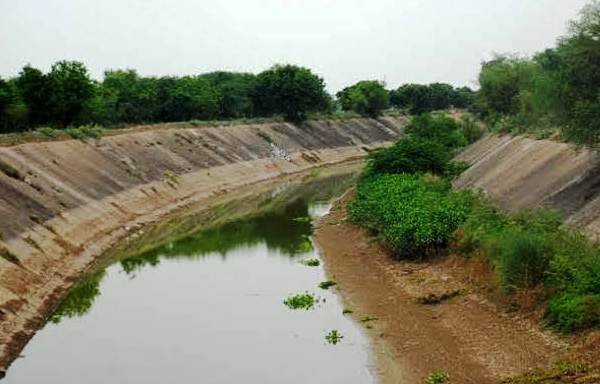SNE NETWORK.CHANDIGARH.
Punjab and Haryana are ready again for talks on Sutlej Yamuna Link Canal (SYL). After the invitation of the central government, there will be a meeting between the Chief Ministers of Punjab-Haryana on the issue of construction of the canal in Delhi. Talks led by the central government will be held in Delhi on July 9. Haryana CM Naib Singh Saini, Punjab CM Bhagwant Mann and Union Water Power Minister CR Patil will be present in it.
Punjab and Haryana are preparing to put forward their respective sides strongly in this meeting. Both the CMs have instructed the officials to prepare the relevant documents and details of the meetings held so far.
Punjab-Haryana CMs have given these statements on this issue…
Saini has said: Punjab is on the path of confrontation instead of cooperation
Regarding the delay in the construction of the Sutlej-Yamuna Link Canal, CM Saini has said, “Despite the Supreme Court giving clear orders in favor of Haryana, the Bhagwant Mann government of Punjab is on the path of confrontation instead of cooperation. Chief Minister Bhagwant Mann should get down from the chariot of arrogance, because Punjab is the land of Gurus, he should work in the interest of the society, but Bhagwant Mann is disrespecting the teachings of the Gurus.”
Mann had said: Water crisis in Punjab, think about YSL instead of SYL
Punjab CM Bhagwant Mann has said, “In view of the serious water situation in Punjab, construction of Yamuna-Satluj-Link Canal should be considered instead of Sutlej-Yamuna-Link Canal. In an agreement between old Punjab and Uttar Pradesh on March 12, 1954, no specific area was shown for irrigation with the water of Yamuna.”
In May, the Supreme Court had asked for reconciliation
In May, the Supreme Court again directed Punjab and Haryana to cooperate with the Center to resolve the matter. The Supreme Court had earlier appointed the Jal Shakti Minister as the chief mediator in the matter and asked him to play an active role instead of remaining a mere ‘mute spectator’.
Read here what is the whole matter.. SYL is in cold storage since 1982
The case relates to the construction of the 214 km long SYL canal, of which 122 km was to be built in Punjab and 92 km in Haryana. Haryana completed its part, while Punjab shelved the project in 1982. The case dates back to 1981, when an agreement was reached on water sharing between the two states and it was decided to build the SYL canal for better water sharing.
The Supreme Court has rejected Punjab’s law
In January 2002, the Supreme Court ruled in favor of Haryana and asked Punjab to build the canal as per the terms of the agreement, but the Punjab Assembly passed a law in 2004 to abolish the 1981 agreement. This 2004 Punjab law was rejected by the Supreme Court in 2016. Since then, this matter is stuck in the Supreme Court. Now the next hearing date is fixed on August 13.
The Supreme Court had reprimanded Punjab on the last date
On May 6, during the hearing in this case, Supreme Court Justice Gavai reprimanded the Punjab government and said that if this is not arbitrariness then what is it? After the order to build the canal was passed, the land acquired for its construction was de-notified. This is an attempt to disobey the court order. This is a clear case of arbitrariness. This should have helped the three states. Land was acquired for the project and then it was de-notified.
Haryana suffers loss of Rs 19,500 crore
Haryana has suffered a loss of Rs 19,500 crore so far due to non-construction of Sutlej Yamuna Link (SYL). Due to non-availability of irrigation water for 46 years, 10 lakh acres of agricultural land in South Haryana is on the verge of becoming barren. The most important thing is that due to lack of water, the state is also losing 42 lakh tonnes of food grains every year.
During a meeting with Prime Minister Narendra Modi two years ago, former Chief Minister Manohar Lal had presented these figures. The former CM had said that if SYL had been constructed in 1983 as per the 1981 agreement, Haryana could have produced 130 lakh tonnes of additional food grains and other grains.

